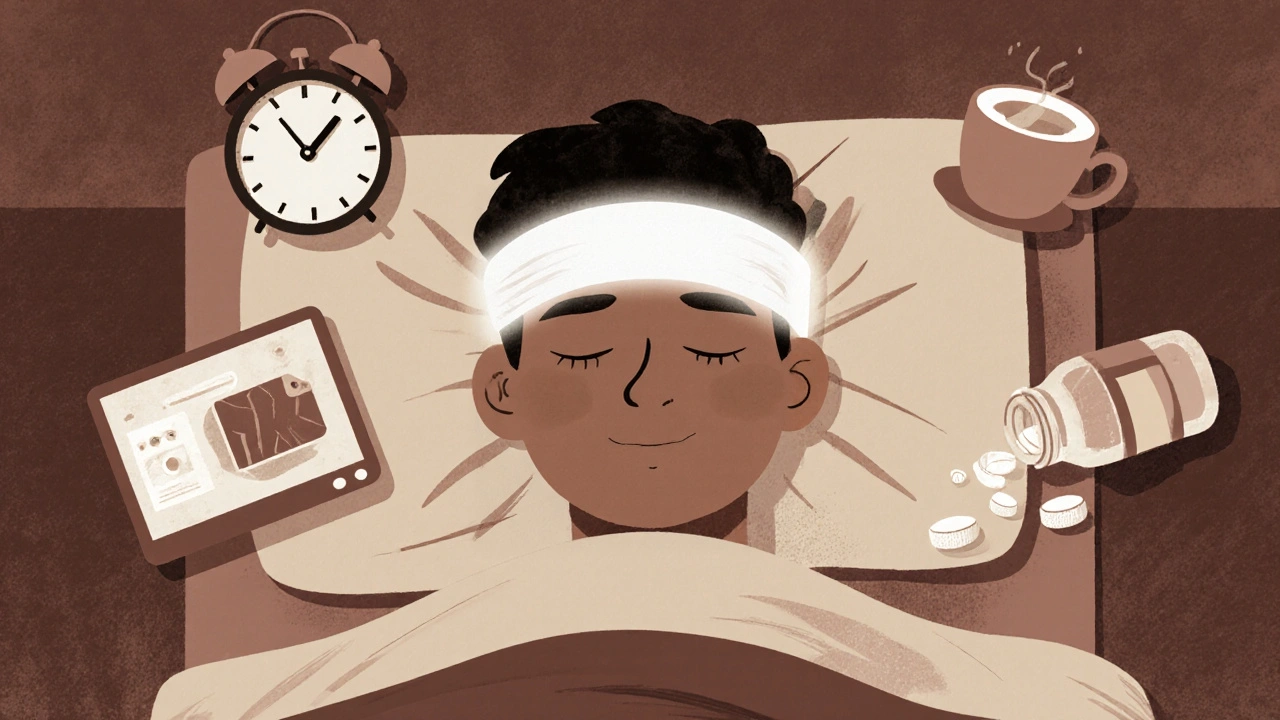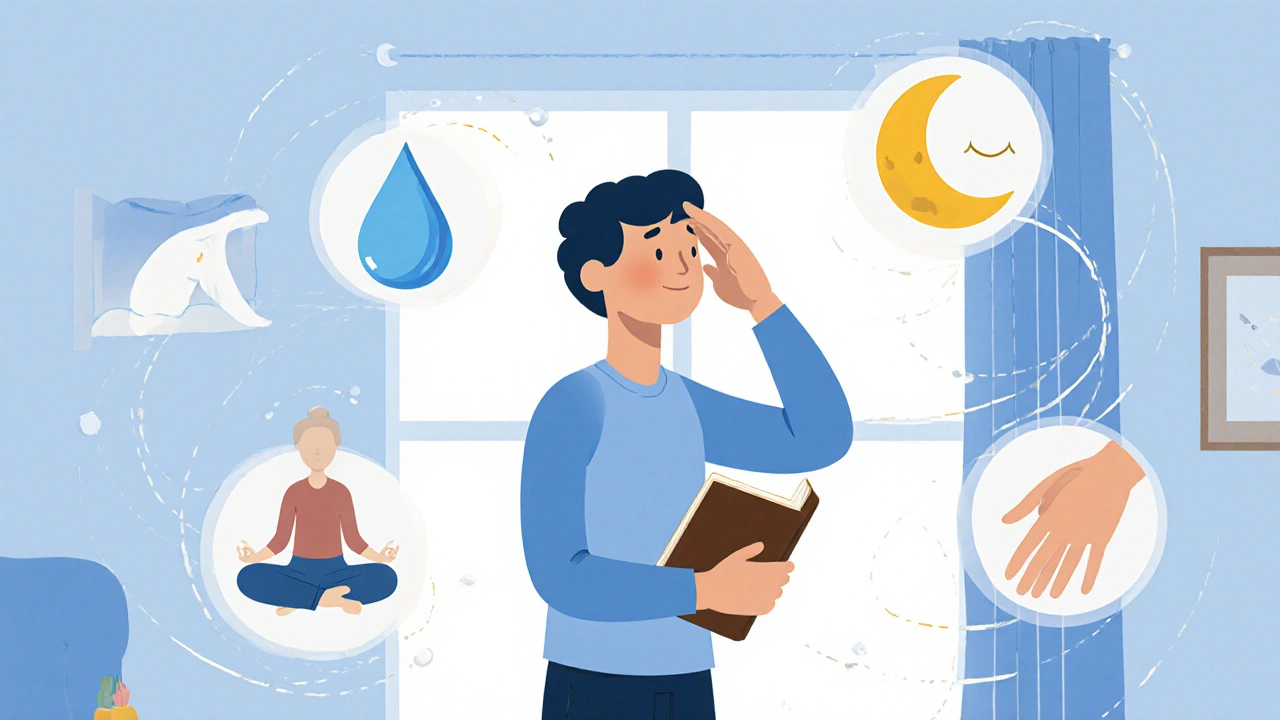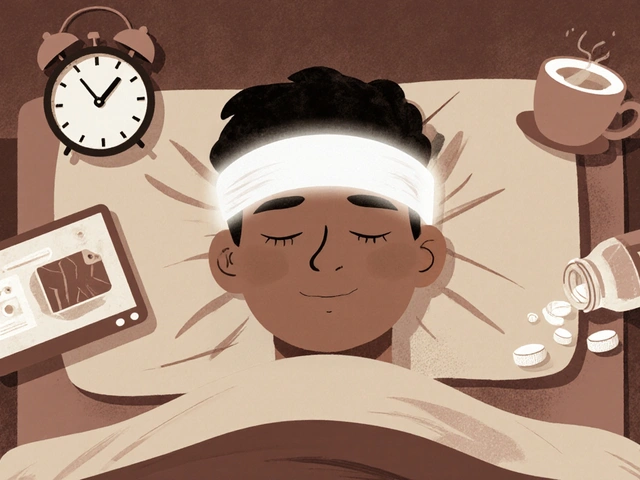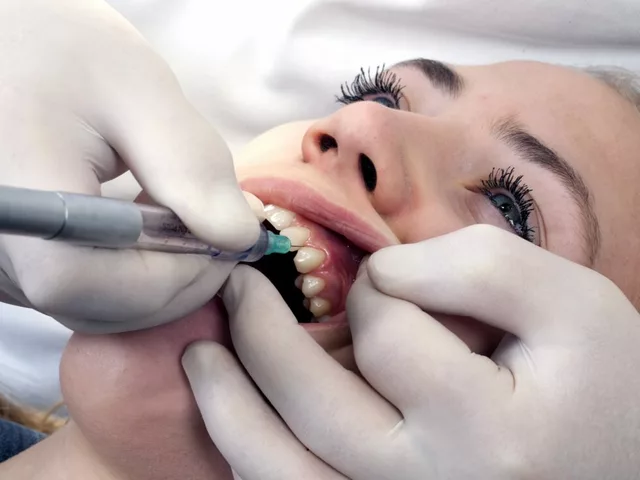14
Chronic Tension Headaches: What Triggers Them and How to Stop Them for Good

Imagine waking up every day with a band of pressure wrapped around your head. Not a sharp pain, not a throb - just a constant, dull ache that never quite fades. For 2 to 3% of adults worldwide, this isn’t just a bad day. It’s their normal. Chronic tension headaches (CTH) are defined by the International Classification of Headache Disorders as headaches occurring on 15 or more days per month for at least three months straight. And unlike migraines, they don’t come with nausea or light sensitivity. But they steal your focus, drain your energy, and make life feel like a slow grind.
What’s Really Going On Inside Your Head?
For decades, doctors thought chronic tension headaches were caused by tight muscles in your neck and scalp. Stress, poor posture, clenching your jaw - all blamed for squeezing your head into pain. But modern science has flipped that idea on its head. Muscle tension? It’s a side effect, not the cause. The real problem lies in your brain’s pain system. Over time, repeated headaches can make your nervous system hypersensitive. This is called central sensitization. Your brain starts interpreting normal signals - like a slight neck stiffness or even just sitting at your desk - as pain. The trigeminal nucleus in your brainstem and the thalamus become stuck in overdrive. That’s why you feel pain even when there’s no obvious trigger. This isn’t just theory. Studies using brain imaging and nerve testing show clear changes in how pain signals are processed in people with chronic tension headaches. And here’s the kicker: muscle tenderness is found in 92% of cases, but it’s a symptom of the sensitized nervous system, not the root cause.What Actually Triggers These Headaches?
Not all triggers are what you’d expect. Stress is often blamed - and yes, it plays a role. But here’s the surprising part: 78% of tension headaches aren’t triggered by stress itself. They happen during the recovery phase after stress has passed. Your body’s cortisol levels spike during stress, then crash when you finally relax - and that drop can spark a headache. Here are the real, evidence-backed triggers:- Sleep disruption: Getting less than 6 hours of sleep increases your risk by 4.2 times. Even small changes in bedtime - like going to bed 30 minutes later on weekends - can trigger episodes.
- Caffeine swings: If you regularly drink more than 200mg of caffeine (about two cups of coffee), skipping it or cutting back can cause rebound headaches within hours.
- Screen time: Spending more than 7 hours a day on screens correlates with a 63% higher chance of daily headaches. The issue isn’t just eye strain - it’s posture. Leaning your head forward just 4.5cm beyond your spine doubles tension in your suboccipital muscles.
- Medication overuse: Taking painkillers like ibuprofen or acetaminophen on 10 or more days a month can turn occasional headaches into chronic ones. This is called medication-overuse headache, and it’s one of the most common reasons chronic headaches get worse.
- Jaw clenching: People with chronic tension headaches show 3.1 times more activity in their jaw muscles during headaches, even if they don’t realize they’re grinding their teeth.
- Dehydration: When your blood becomes too concentrated (serum osmolality above 295 mOsm/kg), it can trigger headaches. That’s less than two glasses of water below the daily average.
How to Stop the Cycle: Prevention That Actually Works
Prevention isn’t about avoiding stress - it’s about rewiring how your brain responds to it. Here’s what works, backed by clinical studies:- 20-20-20 rule for screens: Every 20 minutes, look at something 20 feet away for 20 seconds. This simple habit reduces eye strain and neck tension. It’s endorsed by 83% of users in a 2024 survey from the Migraine Research Foundation.
- Consistent sleep schedule: Keep your bedtime within 20 minutes of the same time every day - even on weekends. One person on HealthUnlocked reduced their headaches from 22 days a month to just 9 by fixing their sleep routine.
- Daily mindfulness: Just 15 minutes of guided breathing or meditation lowers cortisol by 29% in eight weeks. Apps like Insight Timer or Calm can help, but even silent breathing counts.
- Physical therapy: A 12-session program focused on craniocervical flexion (gentle head-nodding exercises) reduced headache frequency by 53% in a 2023 trial. Look for a physical therapist trained in cervicogenic headaches - only 12% of U.S. PTs have this certification.
- Hydration and caffeine control: Drink water consistently throughout the day. If you drink coffee, keep it steady - don’t skip it on weekends. Avoid energy drinks and soda, which cause bigger spikes and crashes.

Medications: What Helps, What Hurts
For acute relief, over-the-counter painkillers can help - but only if used carefully. Ibuprofen (400mg) works for 68% of people, and aspirin (900mg) for 52%. But if you take them more than 14 days a month, you risk turning your headaches into a chronic problem. For prevention, two drugs stand out:- Amitriptyline: This old-school antidepressant is still the gold standard. Starting at 10mg at night, it’s slowly increased to 25-50mg. It reduces headache days by 50-70% in six weeks. But 28% of people quit because of side effects: dry mouth, weight gain (average 2.3kg), and drowsiness.
- Mirtazapine: A newer option with similar effectiveness but fewer side effects. In a 2022 trial of 187 patients, it matched amitriptyline in reducing headaches - but only 35% dropped out versus 62% on amitriptyline. The trade-off? Increased appetite. Some users report feeling “ravenous.”
Therapy: The Hidden Game-Changer
Cognitive behavioral therapy (CBT) is one of the most powerful tools for chronic tension headaches - and it’s underused. A 2021 study in JAMA Neurology found CBT reduced headache days by 41% in just 12 weeks. It doesn’t just teach you to relax - it rewires how you think about pain. You learn to spot early signs, break the fear-pain cycle, and stop catastrophizing. CBT is most effective when combined with physical therapy. One patient in Sydney described it this way: “My PT fixed my posture. My therapist fixed my brain. Together, they gave me my life back.” The catch? Access. In the U.S., a 10-week CBT program costs around $1,200 out-of-pocket. In Australia, Medicare covers some sessions under a Chronic Disease Management plan - but you need a referral from your GP.What to Avoid
There are a few traps most people fall into:- Over-relying on painkillers: Taking them too often makes headaches worse. Stick to the 14-day rule.
- Ignoring sleep: You can’t out-train or out-meditate poor sleep. Prioritize it like your health depends on it - because it does.
- Assuming it’s “just stress”: If your doctor dismisses your pain as psychological, get a second opinion. Chronic tension headaches are real, measurable, and treatable.
- Waiting too long to act: The longer you go without treatment, the more your nervous system adapts to pain. Early intervention makes a huge difference.

When to See a Specialist
If you’ve had headaches on 10 or more days a month for three months, it’s time to see a neurologist who specializes in headaches. General practitioners often misdiagnose chronic tension headaches as migraines - or worse, as anxiety. The diagnostic process is simple but thorough:- Keep a headache diary for at least 30 days (apps like Migraine Buddy help).
- Get a neurological exam - no imaging is needed unless red flags appear (vision loss, weakness, confusion).
- Rule out medication overuse and other secondary causes.
The Future of Treatment
New research is opening doors. A drug called atogepant, originally approved for migraines, showed promise in a 2023 trial for chronic tension headaches - reducing headache days by over five per month. It’s now under FDA Fast Track review. Other emerging options include occipital nerve stimulation (a tiny device implanted behind the neck) and gut-brain research. One study found people with chronic tension headaches have 40% less of a beneficial gut bacteria called Faecalibacterium prausnitzii. Could probiotics play a role? Possibly - but it’s too early to say. The big shift coming? The next version of the headache classification system (ICHD-4, due in 2027) is expected to rename chronic tension headaches as “primary headache with central sensitization.” That’s not just a name change - it’s a recognition that this is a brain disorder, not a muscle problem.You’re Not Alone
One of the hardest parts of living with chronic tension headaches is feeling misunderstood. On Reddit’s r/headaches, 68% of users say they were misdiagnosed for over two years. Common complaints: “Doctors told me it was just stress,” or “They said I was imagining it.” But you’re not imagining it. And you’re not broken. Chronic tension headaches are a real, measurable condition - and they’re treatable. With the right combination of lifestyle changes, therapy, and medication, most people see a 50% or better reduction in headache days within six months. Start small. Pick one trigger to fix this week - maybe your sleep schedule, or your screen breaks. Track your progress. And if your doctor isn’t listening, find someone who will.Can chronic tension headaches go away on their own?
Sometimes, but rarely. About 3.4% of people with episodic tension headaches develop the chronic form each year. Once it becomes chronic, the nervous system adapts, and the headaches are unlikely to resolve without active treatment. Left untreated, they often persist for years. Early intervention is key.
Is it safe to take ibuprofen every day for chronic tension headaches?
No. Taking ibuprofen or other NSAIDs on 10 or more days per month can cause medication-overuse headaches - a condition where the medicine itself makes your headaches worse and more frequent. The safe limit is no more than 14 days per month. If you’re hitting that limit, it’s time to talk to a doctor about prevention strategies.
Can stress cause chronic tension headaches?
Stress doesn’t directly cause them - but it plays a major role. The real trigger is often the drop in stress hormones after a stressful period ends. Your body’s cortisol crashes, and that’s when the headache hits. Managing stress isn’t about eliminating it - it’s about stabilizing your body’s response to it.
Does caffeine help or hurt chronic tension headaches?
It’s a double-edged sword. If you regularly consume more than 200mg of caffeine (about two cups of coffee), sudden withdrawal can trigger a headache. But if you use caffeine occasionally as part of a painkiller (like in Excedrin), it can help relieve an attack. The key is consistency - avoid skipping your usual dose on weekends or holidays.
Is acupuncture effective for chronic tension headaches?
Yes, but modestly. A 2023 Cochrane Review found acupuncture reduces headache frequency by about 3.2 days per month compared to no treatment. It’s not as powerful as CBT or amitriptyline, but it’s safe and can be a useful addition to other treatments - especially if you prefer non-drug options.
Why do some doctors still say tension headaches are caused by muscle tightness?
Because the old theory is still taught in medical schools and used in basic patient education. While neuroscience has moved on - with over 78% of headache specialists now accepting central sensitization as the main cause - many general practitioners still rely on outdated information. Don’t be discouraged if you hear this. Ask for a referral to a neurologist who specializes in headaches.




